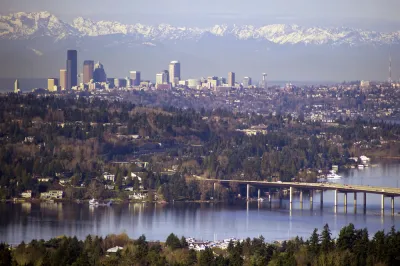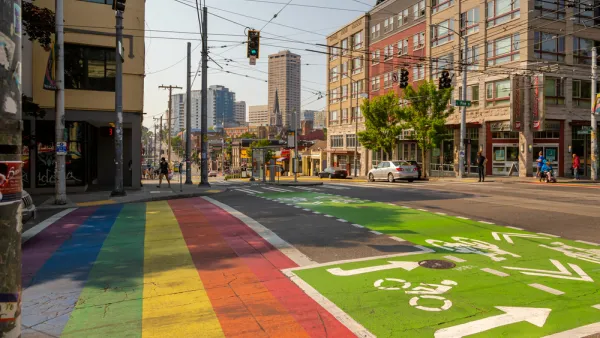Drawing on a slew of examples, Dan Bertolet argues that Washington's State Environmental Policy Act (SEPA) has been co-opted in ways that run against its original purpose: protecting the environment.

When the state of Washington enacted SEPA in 1971, writes Dan Bertolet, "heightened awareness of ecology spawned stricter controls on development. In the subsequent decades, though, we've learned that concentrating new homes in existing urbanized areas is an ecological imperative."
Bertolet's main gripe is with how SEPA appeals are used to stymie construction in urban areas. "Outside of urban housing construction, SEPA is an essential set of environmental regulations. [...] It's in the city where SEPA has gone off the rails."
Under current law, Bertolet writes, "Anyone averse to a proposed apartment building for whatever reason can file a legal appeal through SEPA that delays construction. The risk of appeal introduces toxic uncertainty to homebuilding, because delay, as I've spelled out elsewhere, can rack up costs that bleed projects into the red. The result is fewer new homes." The article includes a wide range of such examples.
"SEPA fixates on what's immediate and localized while ignoring what's long-term and far-reaching. For example, SEPA demands to know how many cars will come and go from a new apartment building, but it is oblivious to how increased housing density reduces car use across a metro region." Bertolet's ultimate conclusion is that SEPA's focus needs to be redefined on the state level.
FULL STORY: Washington’s State Environmental Policy Act Has Become A Bane To Sustainable Urban Development

National Parks Layoffs Will Cause Communities to Lose Billions
Thousands of essential park workers were laid off this week, just before the busy spring break season.

Retro-silient?: America’s First “Eco-burb,” The Woodlands Turns 50
A master-planned community north of Houston offers lessons on green infrastructure and resilient design, but falls short of its founder’s lofty affordability and walkability goals.

Delivering for America Plan Will Downgrade Mail Service in at Least 49.5 Percent of Zip Codes
Republican and Democrat lawmakers criticize the plan for its disproportionate negative impact on rural communities.

Test News Post 1
This is a summary

Test News Headline 46
Test for the image on the front page.

Balancing Bombs and Butterflies: How the National Guard Protects a Rare Species
The National Guard at Fort Indiantown Gap uses GIS technology and land management strategies to balance military training with conservation efforts, ensuring the survival of the rare eastern regal fritillary butterfly.
Urban Design for Planners 1: Software Tools
This six-course series explores essential urban design concepts using open source software and equips planners with the tools they need to participate fully in the urban design process.
Planning for Universal Design
Learn the tools for implementing Universal Design in planning regulations.
EMC Planning Group, Inc.
Planetizen
Planetizen
Mpact (formerly Rail~Volution)
Great Falls Development Authority, Inc.
HUDs Office of Policy Development and Research
NYU Wagner Graduate School of Public Service





























